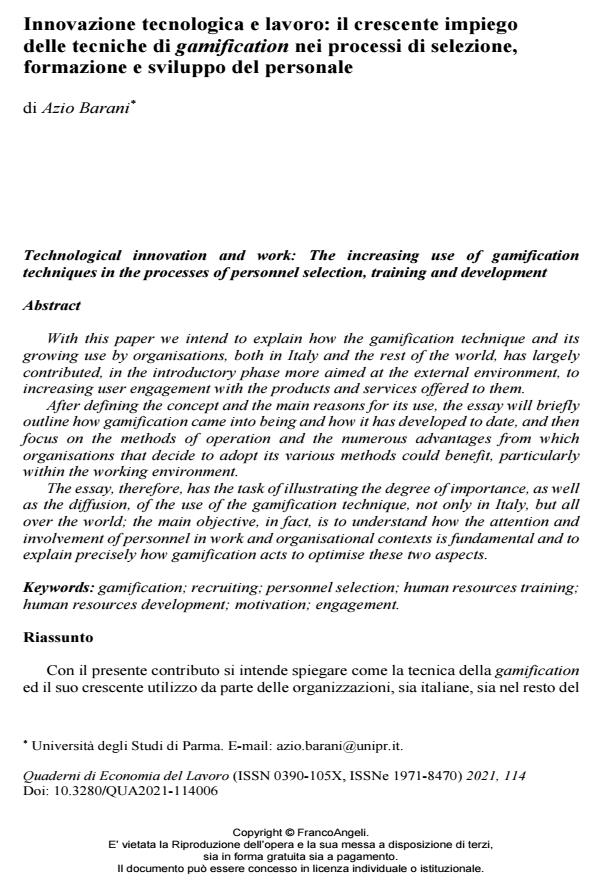Technological innovation and work: The increasing use of gamification techniques in the processes of personnel selection, training and development
Journal title QUADERNI DI ECONOMIA DEL LAVORO
Author/s Azio Barani
Publishing Year 2023 Issue 2021/114
Language Italian Pages 15 P. 171-185 File size 298 KB
DOI 10.3280/QUA2021-114006
DOI is like a bar code for intellectual property: to have more infomation
click here
Below, you can see the article first page
If you want to buy this article in PDF format, you can do it, following the instructions to buy download credits

FrancoAngeli is member of Publishers International Linking Association, Inc (PILA), a not-for-profit association which run the CrossRef service enabling links to and from online scholarly content.
With this paper we intend to explain how the gamification technique and its growing use by organisations, both in Italy and the rest of the world, has largely contributed, in the introductory phase more aimed at the external environment, to increasing user engagement with the products and services offered to them. After defining the concept and the main reasons for its use, the essay will briefly outline how gamification came into being and how it has developed to date, and then focus on the methods of operation and the numerous advantages from which organisations that decide to adopt its various methods could benefit, particularly within the working environment. The essay, therefore, has the task of illustrating the degree of importance, as well as the diffusion, of the use of the gamification technique, not only in Italy, but all over the world; the main objective, in fact, is to understand how the attention and involvement of personnel in work and organisational contexts is fundamental and to explain precisely how gamification acts to optimise these two aspects.
Keywords: gamification; recruiting; personnel selection; human resources training; human resources development; motivation; engagement.
Azio Barani, Innovazione tecnologica e lavoro: il crescente impiego delle tecniche di gamification nei processi di selezione, formazione e sviluppo del ersonale in "QUADERNI DI ECONOMIA DEL LAVORO" 114/2021, pp 171-185, DOI: 10.3280/QUA2021-114006